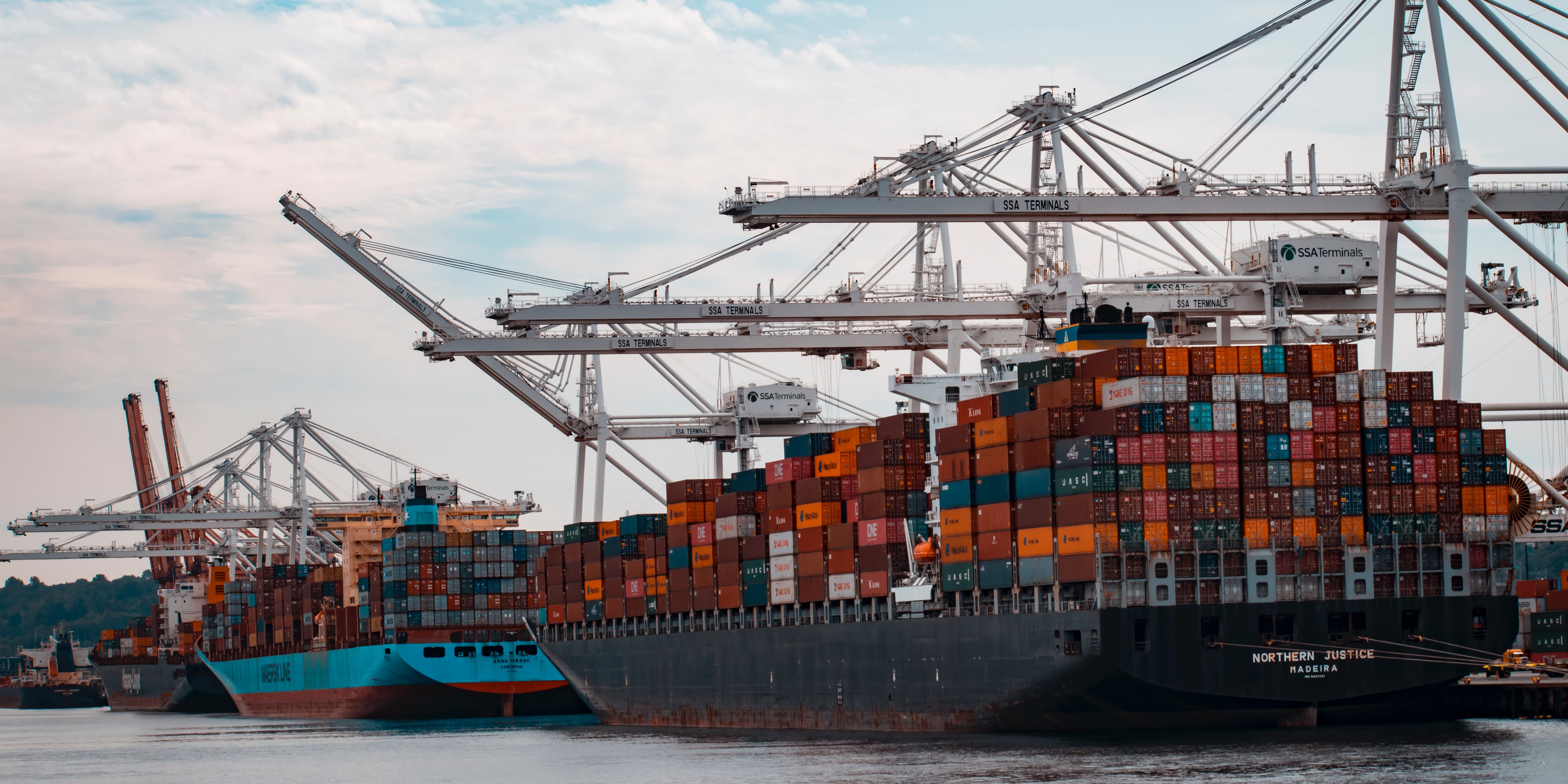How To Drive Profits Through Untapped Markets During A Recession.
ClickThrough's Head of International, Alison Booth, tells us how to increase your profits through untapped markets during a recession.
Read moreIn this week's International marketing news, Andrea Diaz looks at China considering the Metaverse as the 'next big thing', gift card growth in Brazil and much more.
This week in the international news: People in China are considering the metaverse as being the next big thing, gift cards have risen in popularity in Brazil, Russian ships are no longer permitted in UK ports (with the EU considering the same action), and e-Commerce's rise to becoming India's second largest contributor to ad spend.
People in China, like those in the West, are fascinated by what the Metaverse could become, and the the potential market size of this theoretical digital parallel world could be lucrative—one that Morgan Stanley values at $8 trillion (in the future), according to CNBC.
Participation in Chinese metaverses, however, comes with a significant and obvious caveat: they will be governed by a distinct and stringent set of rules, similar to those currently in place in China's internet realm.
The result could be a vastly different metaverse landscape. China's tech companies are walking a tightrope in pursuit of their Metaverse dream.
Chinese tech firms of all sizes are rushing into the Metaverse, seeing it as an exciting and new business opportunity, as well as a potential market disruptor not seen since short video and live stream shopping.
According to The Economist, by the end of 2021, about 1,600 companies had applied for 11,000 trademarks including the Chinese phrase for Metaverse (yuan yuzhou). In the meantime, Meta's virtual reality headsets have been outlawed in the country.
Despite near-term challenges in 2022, the medium to long-term growth story for gift cards in Brazil remains positive.
Brazil's gift card industry is expected to grow steadily in H1 2022 and rapidly in H2 2022. The growth momentum is expected to continue over the forecast period, with a CAGR of 12.1% between 2022 and 2026.
The country's gift card market will grow from $5141.8 million in 2021 to $9270.8 million by 2026.
In Brazil, cash is losing ground to innovative gift cards. While cash remains the most popular payment method in Brazil, accounting for more than a third of all transactions, alternative payment methods such as gift cards are rapidly gaining market share.
Gift cards have grown in popularity over the last four to eight quarters, owing primarily to consumers' growing preference for online shopping. While gift cards are commonly used for gifting in markets such as the United States, the United Kingdom, and India, Brazil is the market where consumers buy gift cards for themselves. Consumers have mentioned convenience as one of the main reasons for utilizing gift cards to make purchases in the country, both offline and online.
Another reason that cash is ceding ground to gift cards in Brazil is because of the country's culture.
Brazil is, for the most part, a cashless society. Prepaid cards (gift cards) are widely used by consumers for nearly all purposes. Prepaid phones account for almost 55% of all mobile phones in the country, transportation cards, and even meal vouchers are often used. In addition, due to the limited use of credit cards in Brazil, gift card penetration is increasing.
In Brazil, payment technology companies are creating new gift card systems for consumers. Payment technology businesses are creating creative gift card platforms for consumers in Brazil as more people switch to digital payment methods like gift cards.
In Brazil, restaurant chains are working with gift card suppliers to increase sales. In Brazil, consumers are mostly searching for a positive buying experience and favourable payment terms.
To better engage with their customers in Brazil, retailers and merchants are cooperating with gift card issuers.
The UK government has quickly enacted legislation prohibiting all ships connected to Russia – not just those flying the Russian flag – from entering UK ports, as well as new powers to detain Russian vessels.
The prohibition applies to vessels flying the Russian flag, registered in Russia, owned, controlled, chartered, or operated in Russia.
European Union countries are also considering a ban on Russian ships entering their ports to tighten sea restrictions following the suspension of air traffic.
According to Reuters, Canada also announced on Tuesday that it would close its ports to Russian-owned ships later this week, a day after it banned Russian crude oil imports. The move comes in response to a ban on Russian flights using UK and EU airspace.
The ban on Russia-related shipping is in addition to the government's evolving economic measures, which include sanctions against the Russian Central Bank and the state's sovereign wealth fund, implying that the majority of Russia's financial system is now subject to UK sanctions.
"The ban on Russian ships from UK ports, as well as new economic sanctions against key Russian financial institutions, including its central bank, will degrade Russia's economy and help ensure Putin loses," Foreign Secretary Liz Truss said.
Although Russian trade accounts for only 2-3% of total UK trade passing through shipping ports, it is concentrated in specific areas such as oil and gas and agricultural products, he added.
Major shipping companies are beginning to close or modify services to Russia and Ukraine.
The government has also confirmed the suspension of all "existing and new" dual-use licenses to Russia.
Dual-use items are products that have a legitimate commercial or civilian function but could also be used for strategic or military purposes and are thus subject to controls.
According to the Russian news agency Tass, MEPs have called on the European Union to limit Russian oil and gas imports and to close all community ports to Russian ships.
MEPs also called for "the closure of EU ports to Russian ships" and "the refusal of access to all EU ports to ships whose last or next port of call is in the Russian Federation, except in the case of necessary justified humanitarian reasons."
e-Commerce has risen to become India's second-largest contributor to advertising spending. According to the Pitch Madison Annual Report (PMAR) 2022, it has more than doubled in size in the last year, from Rs 3,000 crore to Rs 6,000 crore. Furthermore, significant growth has been observed, with eCommerce accounting for 13% of total AdEx in 2021, up from 8.5 percent in 2020.
Between 2019 and 2021, the period marked by the pandemic, the AdEx of the online retail sector increased by 156%. While the Covid-19 crisis accelerated consumer adoption of e-Commerce in India, it also forced brands to revise their retail strategy to reach out to their end consumers.
Over the last five years, urban people and wealthy cohorts living in metropolitan cities have driven more innovation and spending. With the use of local languages and the inclusion of hyperlocal brands, the share of spending in tier-II cities and beyond is increasing significantly. According to industry observers, this is creating new business opportunities. Changes in consumer behaviour have also had an impact on Indian digital advertising. E-commerce Ad spend is distributed across multiple platforms, including television, print, digital, video, social media, and paid search.
Over the last five years, urban people and wealthy cohorts living in metropolitan cities have driven more innovation and spending. With the use of local languages and the inclusion of hyperlocal brands, the share of spending in tier-II cities and beyond is increasing significantly. According to industry observers, this is creating new business opportunities. Changes in consumer behaviour have also had an impact on Indian digital advertising. E-commerce Ad spend is distributed across multiple platforms, including television, print, digital, video, social media, and paid search.
While many brands are available on traditional e-Commerce platforms such as Amazon and Flipkart, these platforms do not allow them to provide unique customer experiences to their customers.
Social Commerce will also drive engagement experiences that are personalized based on a buyer's social media preferences and usage habits. This results in more consistent brand experiences across channels, resulting in greater loyalty and increased customer lifetime value over time.
And that brings us to the end of this week's International marketing news. If you would like Andrea and the team to support your brand's international success, then get in touch!
More articles you might be interested in:

ClickThrough's Head of International, Alison Booth, tells us how to increase your profits through untapped markets during a recession.
Read more
Welcome to the latest round-up of all things digital. This is where we look at the latest updates in the world of PPC, SEO, Content and International...
Read more
Find out more about the latest updates in digital marketing. Featuring key updates from Google, demystifying meta descriptions, and checking in on...
Read more
Episode eight of The Assorted Digital Ramblings podcast is now out! Learn more about International Marketing with guest Alison.
Read more
In this week's International Marketing News, Andrea takes us through personalisation and privacy in retail and much more. Read on.
Read more
In this week's International Marketing News, Andrea takes us through new .au domain extensions, Bitcoin ATMs and more. Read on.
Read more
Join Andrea Diaz for this week's International Marketing news, covering walled garden investigations and more.
Read more
In the International Marketing News this week, Andrea Diaz takes us through the importance of implementing omnichannel strategies in 2022, Huawei...
Read more